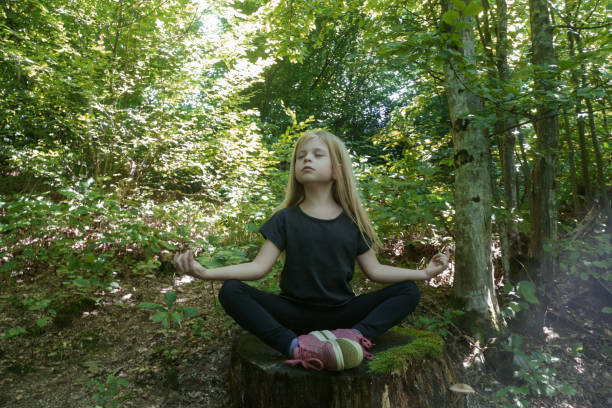
It’s time to take a time-out. This is a time to learn to unplug from the constant tug of cell phones and the Internet. In these times, the barrage of advertising, noise, and stimuli we encounter daily are pulling us in every direction at once.
We feel tired. We feel tired. We feel broken. Mindfulness can bring calmness, happiness, and spaciousness into our lives. Let’s begin with the basics.
What is mindfulness?
Mindfulness is remembering–remembering that we have Let’sy, that we are breathing, that we are alive. We are often in a state similar to sleepwalking. We go through the motions without being aware of ourselves.
Our minds are always in the future. We’re making lists and rushing forward, even when we’re driving, eating, or listening to someone else’s. We lose track of the time when we spend several hours at the computer. We are not in our bodies but somewhere on the Internet or at work.
The process of mindfulness is to bring the mind into the body at the moment.
Mindfulness of the Body
We must first come back to our physical selves. The body is mindful when we pay attention to our breath and become aware of every inhalation and exhalation. The breath is followed into the body, allowing us to become aware of all of the physical characteristics. This includes the constant thump in our heartbeat and the many automatic reactions that keep us alive.
It is important to practice mindfulness of the body as a form of gratitude. We are grateful that we can sit and walk and even blink.
Mindfulness of feelings
The next step is to become aware of the emotions that are coursing through our physical bodies. Pema Chödron, a Buddhist teacher, writes: “You’re the sky.” “Everything else is just weather.”
Observing our emotions without being caught up in the storm is possible when “You’re their spa” e.”
Mindfulness of Thoughts
The lay” r of emotions is intertwined with a layer that contains thoughts. We can see what thoughts lead to which emotions by paying attention to how we think. This may help us let go of untrue thoughts or those that only feed negative emotions.
Mindfulness of mental frameworks
Mental frameworks form the basis of our existence. David Foster Wallace, in a well-known commencement address, tells the tale of two young fish swimming on a sunny ocean day. While the two fish paddle along, an older fish calls out, “Water is warm today, boys!”
Two young fish stare at each other with confusion. The two young fish look at each other in confusion.” Water affects how we feel” think and act, but we can’t see it because we can’t step out of it.
Being aware of our mental frames allows us to identify the misunderstandings we haven’t our world, which can cause us suffering or pain.
How to live mindfully and practice mindfulness
Mindfulness can be practiced in many different ways. It’s best to start by finding a space where you can remove distractions and adhere to ground rules.
Seated Meditation
Sitting mediation is not simple. We become very aware as we sit that the mind tends to drift off into the future or the past. The breath can help keep your mind focused in the moment.
One technique is to count your breaths one through ten and then start again. Sit for 5-10 minutes at first, and then gradually increase the time.
Walking Meditation
Walking meditation is a good option for people who find it difficult to sit still. Walking meditation should be done in nature or along a quiet road, away from cars and other noises. If you are stuck in the city, then a nice park will work.
While you walk, notice the natural process of unfolding and regeneration around you. As always, if you find yourself straying from the breath, bring it back.
Mindful Eating
Mindful Eating may be one of the most transformational practices that we can engage in today’s fast-paced culture. Commit to eating at least one meal a day in silence. Take a moment to examine your food before you start today.
Be sure to take note of its colors and smells. You can take small bites and place your fork down between them. Each mouthful should be chewed 30 times. Be mindful of your thoughts and pause to focus on your breath.
We allow mindfulness to permeate every aspect of our lives when we master it. Our work becomes a meditation in action, and our rituals for waking up and going to sleep are all mindful. We practice mindfulness in communication, sex, and raising children.
We are continually reminded of the wonders of our planet and ourselves when we live with mindfulness.


